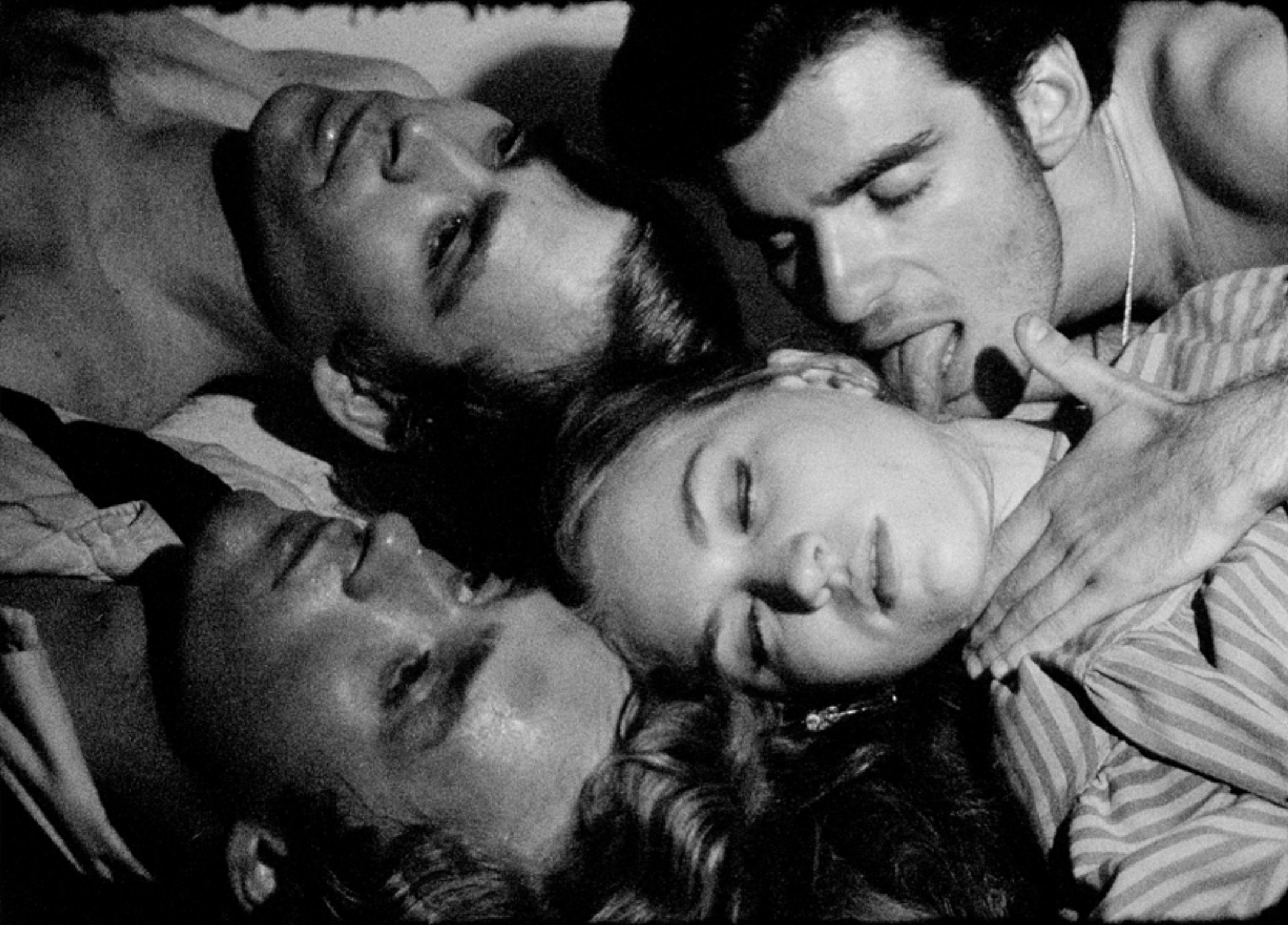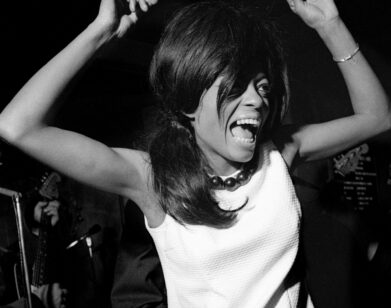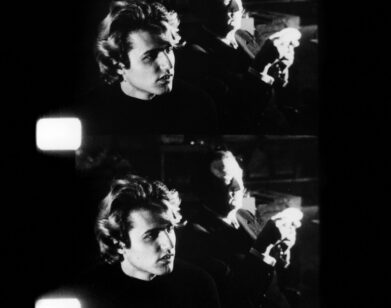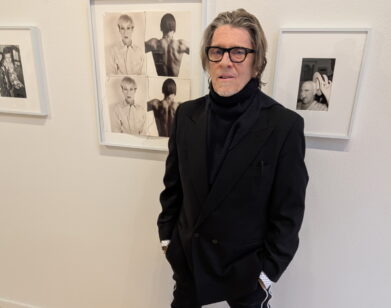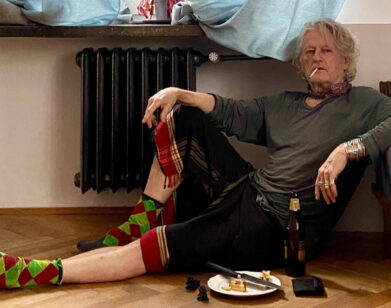Gus Van Sant remembers Andy Warhol’s transgressive film The Chelsea Girls
The following is a foreword taken from Andy Warhol’s The Chelsea Girls (D.A.P./The Andy Warhol Museum):
I worked with a designer who attended the Carnegie Institute of Technology during the same years as Andy Warhol. When I asked if she’d known Andy, my designer looked at me for a moment before she exclaimed, “He was a weenie. We didn’t hang out with him.”
My designer is a vivacious and loquacious person, and she painted a picture for me of the scene at the Carnegie Institute in 1948. She must have been in with the “in-crowd,” and as a young, struggling student Andy was quiet, shy, and withdrawn. I got a very clear image of a group of students laughing and carrying on at their desks, making their art, and Andy off to the side—not joining in, doing his art, part of the party only by proximity.
His proximity to the in-crowd coupled with his outsider perspective created a dynamic that he later used to his advantage. He made the in-crowd his subjects. Some even became his conspirators. The weenie would get his revenge.
The abstract expressionists called pop art superficial and phony; that’s what Andy loved about it. He made superficiality the art, encouraging debate about what was truly important in American society.
In his art and in his films, Andy loved the line between what was phony and what was real. At a screening of The Chelsea Girls, I once heard someone behind me ask, “Is this a real movie?” This was a distinction sometimes used to suggest the difference between a Hollywood movie and a porno film or some other type of experimental cinema. To Andy, the movie was a movie, and that’s all that mattered. It was more real than any real movie.
I grew up on the experimental cinema coming out of New York and San Francisco in the ’50s, ’60s and ’70s. Today, the cinema online—the Vine videos and YouTube postings—resembles that kind of radical filmmaking. For a long time, I have wanted to change the cinematic vocabulary of something I call “Industrial Cinema”—that I see in the world. I call it industrial because it is made by large corporations or industries. Like automobile manufacturers in Detroit, Hollywood has developed a code of pictures, or a vocabulary, that is meant to operate as a business, with the primary intent to draw a crowd and make profits.
As beautiful as Industrial Cinema has been, it is based on an assembly line mass-production of all kinds of stories and subjects that fit within a framework and vocabulary that is easy to understand. A vocabulary that, once it is established, has a difficult time breaking away from itself to achieve any goal other than its original intention—to fill theaters.
Perhaps it was for this reason that Andy cared little about story; he was attracted to anything that would disturb the Industrial Cinema, so he let The Chelsea Girls come into its own as a new cinematic awareness apart from the industry. Jerome Hiler, a projectionist for The Chelsea Girls at its first screenings, said Andy pushed him and the other projectionists toward anything that undressed the Hollywood-ness of the image, encouraging them to hold colored gels or warped glass in front of the projectors’ lenses.
The Chelsea Girls consisted of twelve reels, each running thirty-three minutes. The projectionists mixed up the reels and changed the sound volume for each showing, guaranteeing the audience an original performance each time. The side-by-side projection style seems to have come from the repetitions Andy used in his silkscreens at the time and from the 1966 Exploding Plastic Inevitable rock-and-roll performance experience Andy had created with Paul Morrissey and the Velvet Underground. The mostly black-and-white film mixed with random color reels was like a machine gun of silk-screens, throwing frame after frame in front of the viewer.
Andy started his career illustrating for advertisements, so he was already making pop art and consequently looking at the world through a commercial lens. What is extraordinary is how this inside view of big business led to the creation of such a transgressive and outsider film.
A student at the Rhode Island School of Design, Don Munroe, told a story of Andy coming to visit the school’s museum for an exhibition of his work. Andy was interviewed by a local anchorman, and as the camera rolled, the reporter became more and more frustrated. Andy’s interview technique at the time was not to answer questions himself, but instead to have anyone else answer them. He had brought a model with him, and she was giving the newsman “attitude.” The anchorman grew very angry about Andy’s refusal to respond and started yelling, “Why don’t you answer my questions? Did you come all the way here to say nothing? Don’t you care?”
Andy did care, but he cared about not caring. As a gay boy, he had encountered something that many gay boys face, which is the question of whether you have enough self-respect to not care what people think of you. For all of us gay boys, the issue of self-respect has a different outcome. If you are powerless to hide your gayness, then you must decide you don’t care—if you are going to survive. Andy had no desire to hide his “swishiness,” so he let go of caring. He learned to navigate his life by not caring. If you cared too much you got hurt. Andy was too cool to care. In the ’60s, we were all too cool to care. That’s what cool was—not caring. There was too much to care about anyway, so how could we care?
Everything about an artist builds up into a ball and pushes itself out in a spurt, taking with it all the influences the artist has absorbed during his or her lifetime. Andy made pretty drawings and paintings of nude boys and pussycats that contained both simplicity and passive aggressive tones. He made endless silkscreens of soup cans and Coke bottles in mechanical infinitum. He made silent movies of people sitting in front of the camera doing nothing.
Someone once asked Andy, “Why do such precocious people hang out with you?” And he said, “I never thought they were hanging out with me; I always thought I was hanging out with them.” Once a weenie, always a weenie.
ANDY WARHOL’S THE CHELSEA GIRLS (D.A.P./THE ANDY WARHOL MUSEUM) IS AVAILABLE APRIL 24, 2018.

